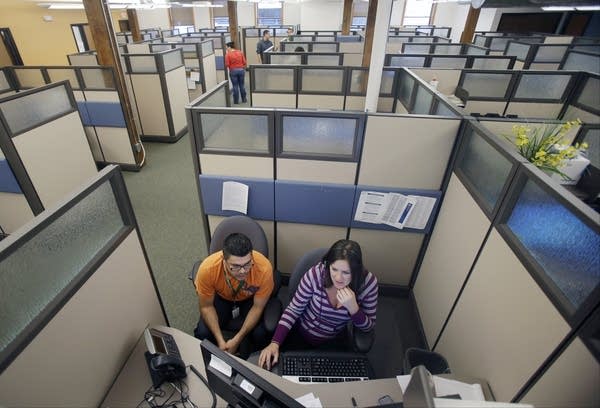Minnesota firms think they're doing OK on diversity; the data say no

MNsure contact center workers in St. Paul. Each state agency has an affirmative action plan.
Jim Mone | AP 2013
Go Deeper.
Create an account or log in to save stories.
Like this?
Thanks for liking this story! We have added it to a list of your favorite stories.


